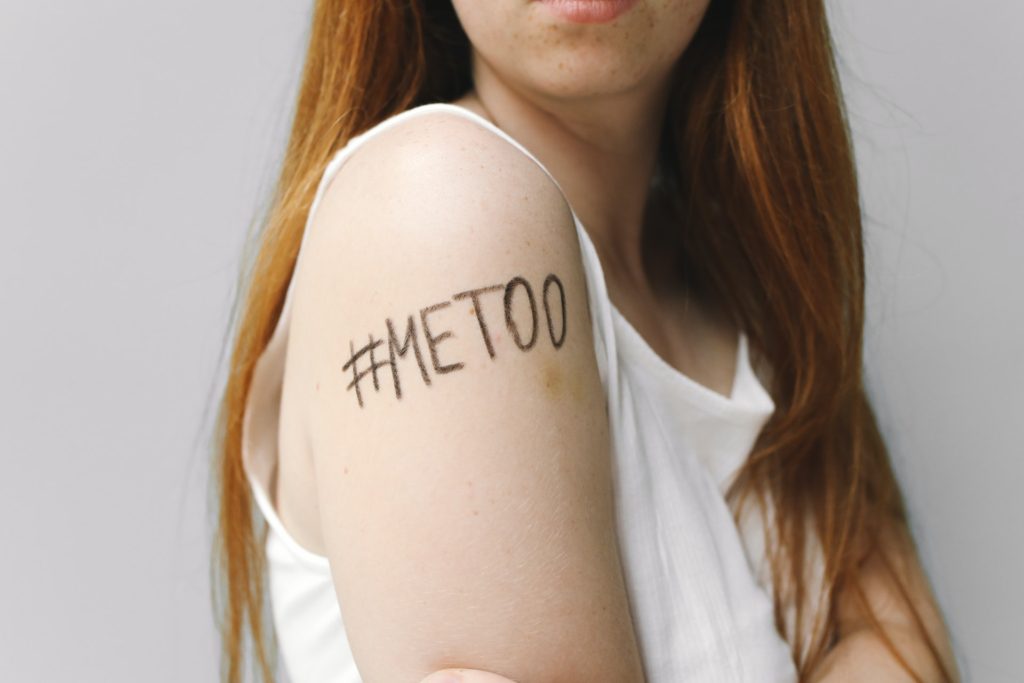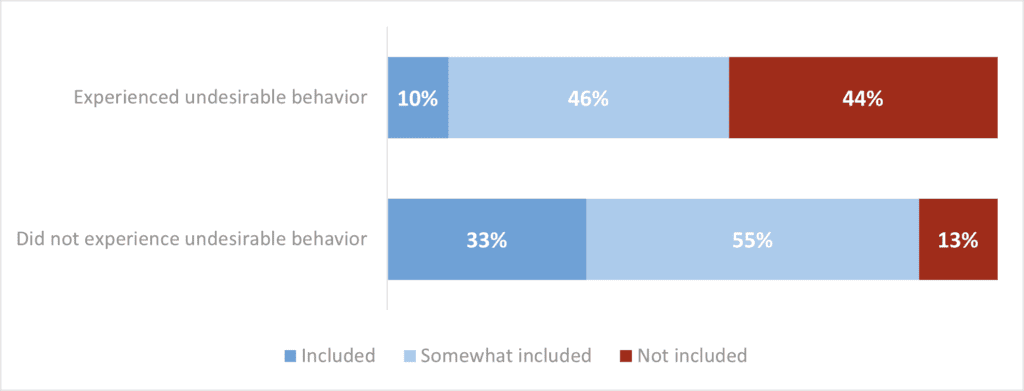Getting a grip on undesirable behavior
It has been in the news a lot lately: undesirable behavior is an important theme in many organizations. AnalitiQs’ inclusion benchmark study shows that in 2022, 18% of employees have experienced unwanted behavior and 21% of respondents have seen unwanted behavior occur in their organization. These high percentage lead to the expectation that undesirable behavior plays a role in modern corporate culture.
Undesirable behavior

To understand undesirable behavior within an organization, the most important step is to measure it. Before this can be measured, it is important to clearly define undesirable behavior. What is meant in organizations by undesirable behavior in organizations? AnalitiQs distinguishes five different forms of undesirable behavior:
- Sexually transgressive behavior
- Bullying
- Discrimination
- Physical harassment
- Verbal harassment
For each dimension we describe which behaviors fall under this, for sexually transgressive behavior this can be about inappropriate jokes or messages, but also unwanted touching or sexual assault. Verbal harassment is defined as comments or threats that frighten someone and cause them to influence their behavior.
Inclusion and psychosocial safety
These five forms of undesirable behavior are a standard part of our Diversity & Inclusion Research. We conduct this research at organizations to map their degrees of diversity and inclusion. An important aspect of inclusion is psychosocial safety. Mapping undesirable behaviour therefore also provides insight into the degree of inclusion among employees.
Our benchmark research shows a clear relationship between inclusion and undesirable behaviour. Employees who have experienced unwanted behavior are significantly less likely to feel included in the organization.

Measuring undesirable behavior
To measure undesirable behavior, we ask employees questions on each of the five dimensions to indicate whether they have experienced this themselves. We try to give direction as to what is meant by undesirable behavior by providing clear definitions, to ensure that participants are specific in their responses and our results are in turn accurate. It is ultimately up to the employee himself, however, to indicate whether behavior they have experienced is not acceptable. After all, undesirable behavior is a personal experience for which no absolute units of measurement can be used.
We target our questions to a contemporary period of time, so that the answers also give direction to an organization as to what extent undesirable behavior is currently playing a role.
In addition, we ask employees if they have seen undesirable behaviour occur. This way we can map a potential bystander effect and provide context as to the perceived degree of undesirable behavior in the organization. The percentage of employees who indicate that they see undesirable behavior happening is generally higher than the percentage of employees who indicate that they have experienced undesirable behavior themselves. We see several potential causes for this: (1) employees are less likely to report the undesirable behavior they have experienced themselves and (2) several employees may have seen the same undesirable behavior occur.
Furthermore, the questionnaire not only asks whether people have experienced undesirable behavior, but also to what extent they have taken follow-up steps. This is asked for each type of undesirable behavior, which also looks at the next steps and satisfaction with this. In this way, it is clearly mapped out:
- To what extent undesirable behavior takes place in the organization
- Which dimensions of undesirable behavior this concerns
- Whether employees report this undesirable behavior
- Where this undesirable behavior is reported
- Whether employees are satisfied with the next steps that are taken
Safeguarding anonymity
We conduct the surveys as anonymously as possible. This means that neither we, nor the organization itself, have any way of finding individual results. By ensuring clear communication about this approach, we increase the confidence of employees in this research as much as possible. In many cases, we achieve a response rate of 70-80% in organizations.
In addition, it is important that employees have the opportunity not to answer the questions. So, there’s always an option for ‘Don’t know/Don’t want to say’. This information can also be very valuable; a high response rate to this response option is often a sign of an unsafe work environment.
Acting on the results
Depending on the results of the study, different follow-up steps can be taken. Because our surveys cover a holistic view of different aspects of undesirable behavior, providing in particular the percentage of employees who reported undesirable behavior (either personally experienced or witnessed) and their satisfaction with how the undesirable behavior(s) were dealt with. This allows us to provide a clear indication of necessary follow-up steps.
In addition, AnalitiQs can always offer a possibility to contact the confidential advisor directly in the questionnaire. This information is not recorded by AnalitiQs and therefore remains completely anonymous. In this way, the possibility of contacting the confidential advisor is offered in an anonymous way.
Getting started with Diversity & Inclusion?
Contact us for more information!

